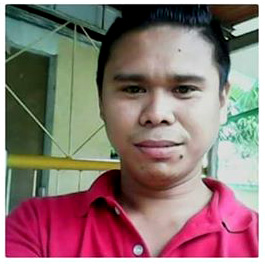By Elizabeth D. Ferraris, CDO III
“Sa likod sang pag pangabudlay may anihon (sacrifices paid off), a volunteer Vicente Eleviran stated during his testimony in the MCC end of project ceremony. This is the journey of one of the volunteers of Kalahi-CIDSS program in Sibunag.
Kalahi-CIDSS as a poverty reduction program of DSWD, had experienced challenges in making beneficiaries, stakeholders and local government work together for a common purpose – development. Without committed volunteers, programs would not create impact that results to the ownership of the projects implemented in the communities. This sense of ownership guarantees the sustainability of the benefits the project provides.
Sibunag became a municipality way back in 1995 when Guimaras was declared as Province through R.A. 7896. It composed of 14 barangays, with an island barangay which is privately owned.
Dependent on the IRA which is only about 64,251,960 Sibunag can hardly provide the basic needs of its population with 2,908 households. Life was difficult despite of the abundance of agriculture and fishery products in the communities. Bad roads and the high cost of transportation impair the delivery of produce from the farm to the market. People hire motorcycles to go to the town.
In 2012, Sibunag was chosen as one of the randomly selected areas for Kalahi-CIDSS funded by the Millennium Challenge Account-Phil (MCA-P) of the US government. The geographic location of Sibunag identified at the beginning stage was viewed as a challenge and may cause the delays in the procurement process. There was no source of materials such as sand and gravel at the area. This will need to be taken from the city of Iloilo, thus a high risk and may be a major cause of delay in all construction related sub-projects such as schools, day care centers, health centers and farm to market roads.
Still, since Kalahi-CIDSS started in Sibunag last 2013, with a strong 1,339 volunteers and the local government units of the barangays under the leadership of the municipal local chief executive, Luben Vilches, and department heads who worked harmoniously in implementing the various sub-projects, Sibunag was able to complete all works with less delay based on the schedules satisfying the beneficiaries.
Performing well in project implementation, Sibunag was chosen to avail of the regional and national incentive grants amounting to P40,257,000 that went to the construction of a 6.773 km. concrete farm to market road benefitting the farmers engaged in vegetable gardens, poultry and fishery in barangays of Alegria, Dasal and San Isidro.
The sub-project preparation activities started on November 21, 2015 and was completed on April 14, 2016 before the end of Kalahi-CIDSS MCC compact on May 25, 2016.
Today, the people in Sibunag enjoy a better life, with good roads and access to education, health and economic opportunities, good governance and partnership with communities brought about through the Community Driven Development as experienced in Kalahi-CIDSS. People has seen how responsible, accountable and transparent political system can minimize or eradicate corruption that results to progress of their community.
The project not only changed the physical landscape and economic conditions of Sibunag. It became a venue for people from all walks of life to work together, willingly offered resources and engaged in the project as volunteers.
Also, political leaders like Mayor Vilches experienced working closely with their constituents and shared the responsibilities in developing their areas. Thus, he had seen the impact on the lives of volunteers who had turned into an empowered individuals, like Vicente or Etik who before had no knowledge about project management.

As the BSPMC of Brgy. Alegria, Vicente Eleviran, more known as “Etik agi” and discriminated for his gender preference, experienced managing the 40 million fund without any major finance findings in the preparation of payments to contractors and suppliers.
Vicente was a Day Care worker before but left the job to focus on the implementation of the project. For him Kalahi-CIDSS made him learned to think and analyze situations.
“Sa Kalahi, pirmi lang pamangkot, nga-a, nga-a, kag wala katapusan nga papeles. Pero nasarangan ko gid kag ginsakripisyo ko ang akon personal nga interes sa pag ka Day Care Worker kay kinahanglan gid sa proyekto ang tiempo para matapos. Bangod sini nagpati ang akon kasimaryo sa akon abilidad maski ako agi (In Kalahi, you always ask, why? Why? and there’s too many paper works. But I was able to manage and sacrificed my personal interest as Day Care Worker because the project needs time to be completed. Because of this my community members believed in my capacity even if I am gay),” a proud Vicente narrated.
“Sa Kalahi ko na ka experience mag seminar sa hotel kag na katuon sang Fiduciary Review sa diin nakatuon sang paghimus sang mga document sa pagbayad sang mga transaksyon kag magsakay saeroplano sang nag pa Manila kami nag attend forum. Gina pabugal ko akon kaugalingon nga nakapirma ako sang mga tseke balor milyones nga wala sang findings (In Kalahi I experienced attending seminars in hotels and learned Fiduciary Review and filing documents for payment and take an airplane to Manila to attend a forum. I feel proud of myself that I signed checks worth millions without any findings).”
Vicente continues his work as volunteer in his barangay implementing the other development projects and as Resource Person in the Family Development Sessions of the Pantawid Pamilyang Pilipino Program. (Kalahi-CIDSS/DSWD)
